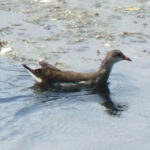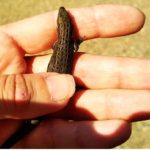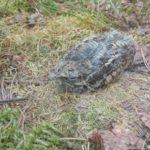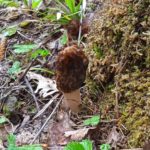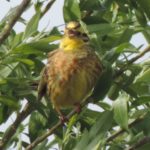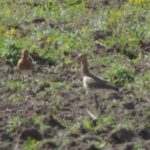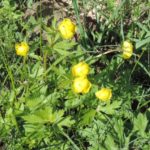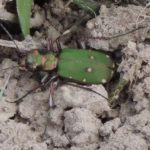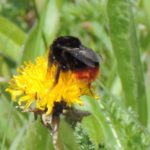Zinchenko T.D., Abrosimova E.V., Gorokhova O.G., Golovatyuk L.V., Kuznetsova R.S., Bolotov S.E. Condition of Plankton and Bottom Communities of the Lowland Usa River (Basin of the Middle Volga River, Kuybyshev Reservoir) under Climate Changes // Ecosystems: ecology and dynamics. No 2. 2023. P. 137-175. | Abstract | PDF | Reference
- Scheme showing the location of sampling stations along the Usa River
- Composition of plankton algoflora in the Usa River
- Changes in the abundance (1) and biomass (2) of algae of different taxa at the sampling stations (ст) of the Usa River in 2017 and 2018
We studied the specific features of spatial and structural variability of plankton and bottom communities of the small lowland river Usa, a tributary of the Kuibyshev Reservoir, as part of comprehensive studies of the ecological condition and water quality of the river. Based on the results of 2017-2018 studies, we established the type of spatial distribution of phytoplankton, zooplankton and macrozoobenthos community species along the longitudinal profile of the river with regard to hydrochemical indicators.
A comparative analysis of changes in the species richness of plankton and bottom communities and assessments of the ecological state of river with regard to the spatial variability of species diversity and quantitative characteristics was carried out. Based on the results of changes in the number and biomass of the main taxonomic groups using different methodological approaches to study the dynamics of hydrobiological indicators, their non-stationarity and the existence of regular trends depending on hydrological and hydrochemical factors were established.
The biodiversity of summer plankton algocenoses of the Usa River depending on hydrological conditions, anthropogenic influence, and changes in the content of biogenic substances was assessed for the first time. 201 algoflora taxons ranked below genus from 7 algae divisions have been identified. The dominant ones are Bacillariophyta (56% of the composition) and Chlorophyta (28%). In the limnoplankton of the Usinsk Bay the species ratio in the composition of algae divisions changes in the direction of increasing share of green algae – Chlorophyta (45%). The proportion of Cyanoprokaryota varies from 4% in the Usa River to 12% in the Usinsk Bay.
It was found that the spatial dynamics of algocenosis structure in the Usa River is characterized by an increase in species diversity, abundance, biomass, chlorophyll-«a» content from the source to the mouth. Correlation analysis revealed reliable relations (P ≤ 0.05) between flow velocity, chlorophyll-«a» concentration, abundance, specific number of species, biomass (r = -0.65, r = -0.69, r = -0.82, r = -0.79, respectively). In terms of biomass and chlorophyll-«a» concentration, the trophic state of rivers in the upper and middle reaches is oligotrophic, in the estuaries – oligo-mesotrophic, in the Usinsk Bay water masses correspond to mesotrophic type. The main pollutant throughout the river is the concentration of total P (7-18 MAC), which is accompanied by an increase in the proportion of myxotrophic phytoflagellates – indicators of organic pollution. The increase in the number and biomass of phytoplankton in 2017 is due to the high content of biogenic elements (N, P).
Zooplankton of the Usa River water system includes 45 species, of which there are 28 Rotifera, 13 Copepoda and 4 Cladocera. Composition of zooplankton is typical for Volga basin water bodies and is represented by phytophilic and planktonic rotifers, planktobenthic crustaceans of Alona genus. For the first time in zooplankton of the mouth zone of the Usa River an invasive species, rotifer Kellicottia bostoniensis (Rousselet, 1908) – inhabitant of water bodies of northern latitudes was registered. The highest values of zooplankton abundance were recorded in the deep-water section of the “river – reservoir”, where the number and biomass of zooplankton reached 0.4 thousand ex/m3 and 5.4 g/m3 with predominance of holarctic Daphnia galeata (G.O. Sars, 1864). Dynamism of hydrophysical and hydrological parameters determines longitudinal distribution of quantitative and structural indicators of planktonic organisms communities by ecocline type in conditions of inhabiting meso-eutrophic water masses.
The spatial variability of plankton and bottom communities has been established, taking into account local biotopic variability determined by the landscape geomorphology features and the regular trend of quantitative indicators of biotic communities taxocenes.
Assessment of water quality and ecological state of the watercourse was performed using integral methods and metrics. The obtained results of the water quality assessment of the Usa River can be used as a reference for calculating the multi-metric indicators of the ecological state of typologically similar small plain rivers.
Keywords: Usa river, small rivers, plankton and bottom communities, taxonomic diversity, abiotic factors, spatial distribution, ecological state, water quality, the basin of the Kuibyshev reservoir (Middle Volga Basin, Russia).
Funding. This work was carried out for the state task No. АААА-А17-117112040040-3 “Assessment of Modern Biodiversity and Forecast of Its Change for the Ecosystems of the Volga Basin under the Conditions of their Natural and Anthropogenic Transformation”, №121051100109-1 “Systematics, diversity, biology and ecology of aquatic and semiaquatic invertebrates, structure of populations and communities in continental waters”, and supported financially by the Russian Foundation for Basic Research (17-04-00135; 17- 44-63019) “Ecosystem Diversity of Lowland Rivers in the Middle Volga Basin under Current Conditions of Climate Change and Anthropogenic Impact”.
DOI: 10.24412/2542-2006-2023-2-137-175
EDN: HGMMEE






